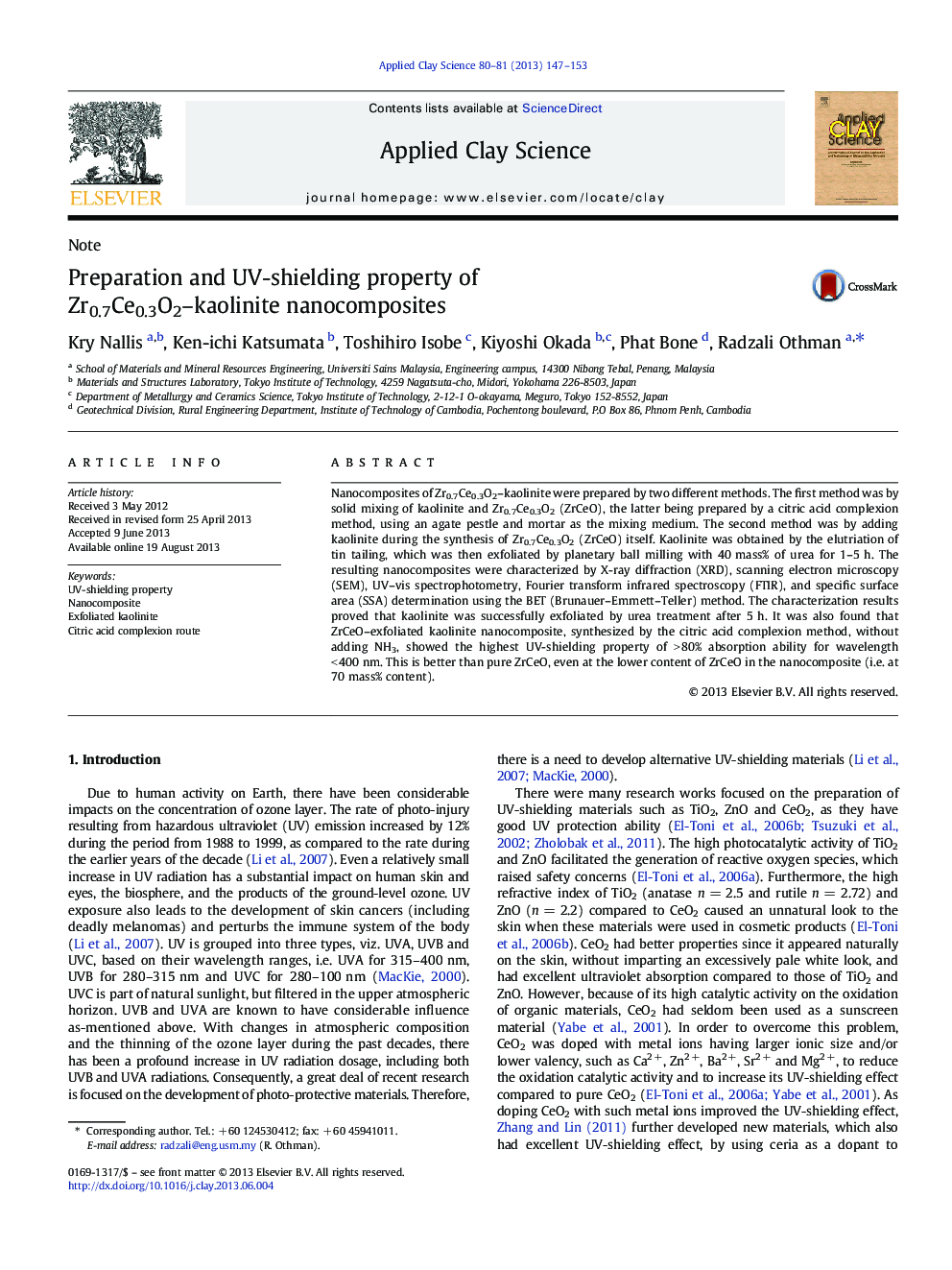| Article ID | Journal | Published Year | Pages | File Type |
|---|---|---|---|---|
| 8047598 | Applied Clay Science | 2013 | 7 Pages |
Abstract
Nanocomposites of Zr0.7Ce0.3O2-kaolinite were prepared by two different methods. The first method was by solid mixing of kaolinite and Zr0.7Ce0.3O2 (ZrCeO), the latter being prepared by a citric acid complexion method, using an agate pestle and mortar as the mixing medium. The second method was by adding kaolinite during the synthesis of Zr0.7Ce0.3O2 (ZrCeO) itself. Kaolinite was obtained by the elutriation of tin tailing, which was then exfoliated by planetary ball milling with 40Â mass% of urea for 1-5Â h. The resulting nanocomposites were characterized by X-ray diffraction (XRD), scanning electron microscopy (SEM), UV-vis spectrophotometry, Fourier transform infrared spectroscopy (FTIR), and specific surface area (SSA) determination using the BET (Brunauer-Emmett-Teller) method. The characterization results proved that kaolinite was successfully exfoliated by urea treatment after 5Â h. It was also found that ZrCeO-exfoliated kaolinite nanocomposite, synthesized by the citric acid complexion method, without adding NH3, showed the highest UV-shielding property of >Â 80% absorption ability for wavelength <Â 400Â nm. This is better than pure ZrCeO, even at the lower content of ZrCeO in the nanocomposite (i.e. at 70Â mass% content).
Keywords
Related Topics
Physical Sciences and Engineering
Earth and Planetary Sciences
Geochemistry and Petrology
Authors
Kry Nallis, Ken-ichi Katsumata, Toshihiro Isobe, Kiyoshi Okada, Phat Bone, Radzali Othman,
